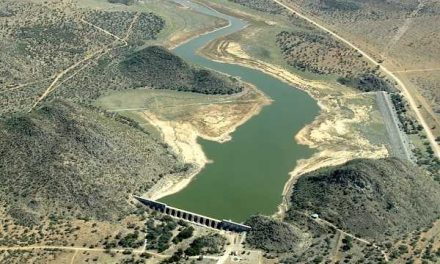
Weather 21 October 2016
What Happened
The anti-cyclonic circulation over the sub-continent is growing in strength by the week. The effect can be seen in the airflow which is predominantly north-east to north, and the very hot afternoons over the eastern, central, north-eastern, northern and north-western sections of Namibia. The same conditions are replicated over most of Botswana, western Zambia and the southern half of Angola. This indicates that the same conditions are more or less in place over the central, central north, and central west of southern Africa.
Over east Africa, the upper atmosphere continues to be fragmented, impacted by high pressure control which only shifts east to west by a few hundred kilometres during the course of a week. At this point in the season, this is the most debilitating synoptic feature that prevents the onset of the summer rainfall season.
Anecdotal evidence brought tidings of scattered rainfall west of Rundu, near Omega in Babwatwa, and in the Zambezi. However, no official measurements are available and the precipitation that reached the ground was in the (estimated) order of one to two millimetres. Not something that can be called a fullblown summer season yet.
During the week, the synoptic progression was seasonally typical. The southern Indian high pressure cell remained stationary some 1500 km south of Madagascar with a core reading that increased to 1028 mB by week’s end. The South Atlantic high remained about 1000 km offshore in the west, but its core shifted noticeably to the north. Whereas, at the beginning of the week it was offshore from Cape Town, by Friday it is due west of Walvis Bay with a weak core reading of only 1020 mB.
Between these two lies the southern African sub-continent, the whole of which is dominated by low pressure conditions on the surface, with the deepest concentration over northern Botswana, western Zambia, southern Angola and the north-east of Namibia.. This is also the reason why late afternoons in this vast area approached or exceeded 40°C. Here the atmosphere extends vertically to above 50,000 feet. Upper air high pressure control over east Africa this time of the year, is not anomalous. It is a result of the transition from winter to summer when the southern Indian high still exerts an influence a few thousand kilometres north of its core which lies south of Madagascar. What is anomalous, is that it extends up to the equator and even beyond into Somalia and Ethiopia. This is indicative of a weak development of the cyclonic circulation over the central Indian ocean. Simply put, the high over east Africa, at this point, is stronger than the low over the Indian ocean, and it prevents the east west moisture conveyor from working properly. The result is suppressed convection and precipitation over central Africa.
The same conditions are reflected in the so-called Inter-Tropical Convergence Zone. A south western extension from this zone hugged the Angolan coastline this week and entered Namibian airspace from the north-west. It formed a weak mid-level trough running from Angola into Namibia and brought considerable cloudiness to the eastern, north-eastern and northern sections, while the south-western quadrant remained clear or only saw very weak cloud development. But the southern boundary of the ITCZ is still some 800 km into Angola. Conditions will not turn positive until the ITCZ sits almost on the Namibian Angolan border.
What’s Coming
A low pressure system approaches the Cape by Saturday afternoon. It does not have the strength to develop into a so-called cut-off low, but it should add a little oomph to the north to south circulation prevalent over Namibia.
The South Atlantic high pressure cell weakens but it remains on the Walvis Bay latitude. By Monday, the low pressure system passes south of the Cape, closely followed by a frontal system, driven by the next approaching South Atlantic high. Another mid-level trough forms from Angola into Namibia, but its effect will only be seen from next Wednesday onwards.
The continental cyclonic circulation remains in situ, again resulting in excruciating temperatures from Owamboland through the Kavango and Babwatwa into Zambezi.










































